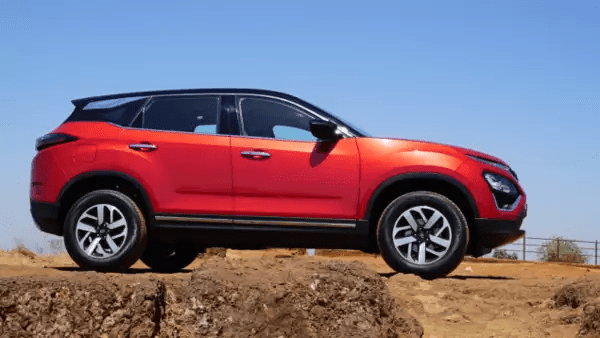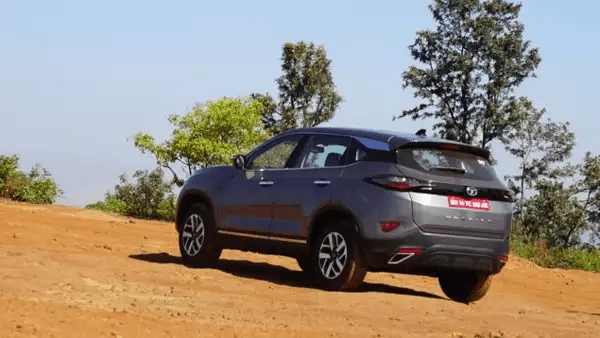
2020 Tata Harrier review: Upgraded with a dash of comfort
Tata Motors walked in with a world-class SUV last year. Developed on the critically-acclaimed Land Rover's D8 platform, , the flagship Harrier wore an unconventional look but blew hot and cold during its stay.
[ad_1]
NEW DELHI: Tata Motors walked in with a world-class SUV last year. Developed on the critically-acclaimed Land Rover’s D8 platform, the flagship Harrier wore an unconventional look but blew hot and cold during its stay.
Come 2020, BS-VI homologation was always knocking the door. Tata Motors seized the opportunity to add a dash of practicality and convenience to the Harrier. The Compass-rival is now equipped with an automatic gearbox with an improved engine. We drove the facelift Harrier in Pune and here are the hits and misses of the SUV in its renewed avatar:
Look and feel:
Let’s start with the exteriors. What’s new? There are barely any changes you can notice. The unconventionally designed beak retains itself with large headlamps and a right mix of chrome around the black grille.
Moving to the sides, the Harrier wears a new pair of shades on the 17-inch alloys. The garnish on the wheels was demanded from the day Harrier came into being. That said, chunkier 18-inch as an option could have been thought about. The ORMVs have shed some mass, and appear more compact now.
The Harrier badging in bold chrome blocks on the rear tailgate along with sleek lamps feature as identical to the previous generation. Dimensionally, the 4.5 metre-long Harrier is unchanged, which means ground clearance, boot space, wheelbase and other numbers are untouched.

I hope you have taken note of the biggest changes in the Harrier by now. The SUV is painted in the glimmering red shade with a black rooftop. Call it Calypso Red if you wish to.
Time to walk inside and find out what’s new. Wrapped in plush brown leather, I always found Harrier very welcoming. Soft-touch materials around the well-appointed cabin are at plenty and the big change now is in the form of a sunroof. Electrically adjustable with rain sensing and anti-pinch features, the company claims the sunroof to be the largest in the segment.
Finding comfort inside is not at all difficult. Cushiony and well-bolstered seats, plenty of soft touch points around the cabin, lots of cubby holes reflect Tata’s commitment to sheer drive comfort.
The steering wheel remains the same with a host of buttons. Auto-dimming IRVMs are also included now. The dashboard appears a tad smaller to the well-laid cabin but now include multi-colour themes for visual effect. However, the big miss here is the connected features. No, ‘Hello Harrier’ … at least for now.
Moving ahead, let’s thumb the starter and enjoy the most interesting bit here. Kryotec diesel engine’s full potential has been unleashed in the BS-VI avatar. A direct jump of 30PS, the 2-litre motor is good enough for 170PS and 350Nm of peak torque.
The power delivery is linear and you would appreciate the steady and relaxed cruising speed on the highway in triple digits, thanks to those 30 points. The clutch pedal isn’t the lightest nor is the steering wheel. But those are something you would get used to over a period of time.
Greet the latest inclusion: Hyundai-sourced 6-speed automatic transmission. The life behind the Harrier’s wheel was never this simple. A well-spaced gearbox is smooth in operation.
Largely refined, the Kryotec engine offers a solid mid-range torque. The diesel clatter kicks in as you go past the 3,000-rpm mark. That said, Tata Motors claims to have worked on the NVH levels and cabin insulation.
Three drive modes are available: Eco, city and sport. In eco mode, as the name suggests, the power output is optimised to offer greater efficiency. Every time you start the car, the engine by default tunes to city mode and in sports mode, you would witness the eagerness of the engine to revv hard.
Claimed efficiency is over 15 kmpl and the automatic gearbox surprised us on the highway, returning 16.1 kmpl. The manual doesn’t fare bad as well. However, we would like to reserve the number until our full road test.
Electronic stability programme (ESP) is provided as standard across the variants now, which will surely assist in charting various terrains with comfort. The suspensions and brakes are carried forward from the last version.
What I like about the Harrier is the drivetrain. A peppier engine now with an option of automatic transmission makes life much easy. The superb ride quality leaves the little scope of complain and with additional ESP modes, you will a comfort course through various roads.
Prices for BS-VI model have gone up between Rs 25,000 to Rs 45,000 according to the trim you choose and the automatic option kicks in at Rs 16.25 lakh (ex-showroom). The 2020 Harrier is a well-rounded package instead of an outright allrounder. A petrol alternative should surely be in Tata’s sight for Harrier’s next midlife upgrade.
[ad_2]


